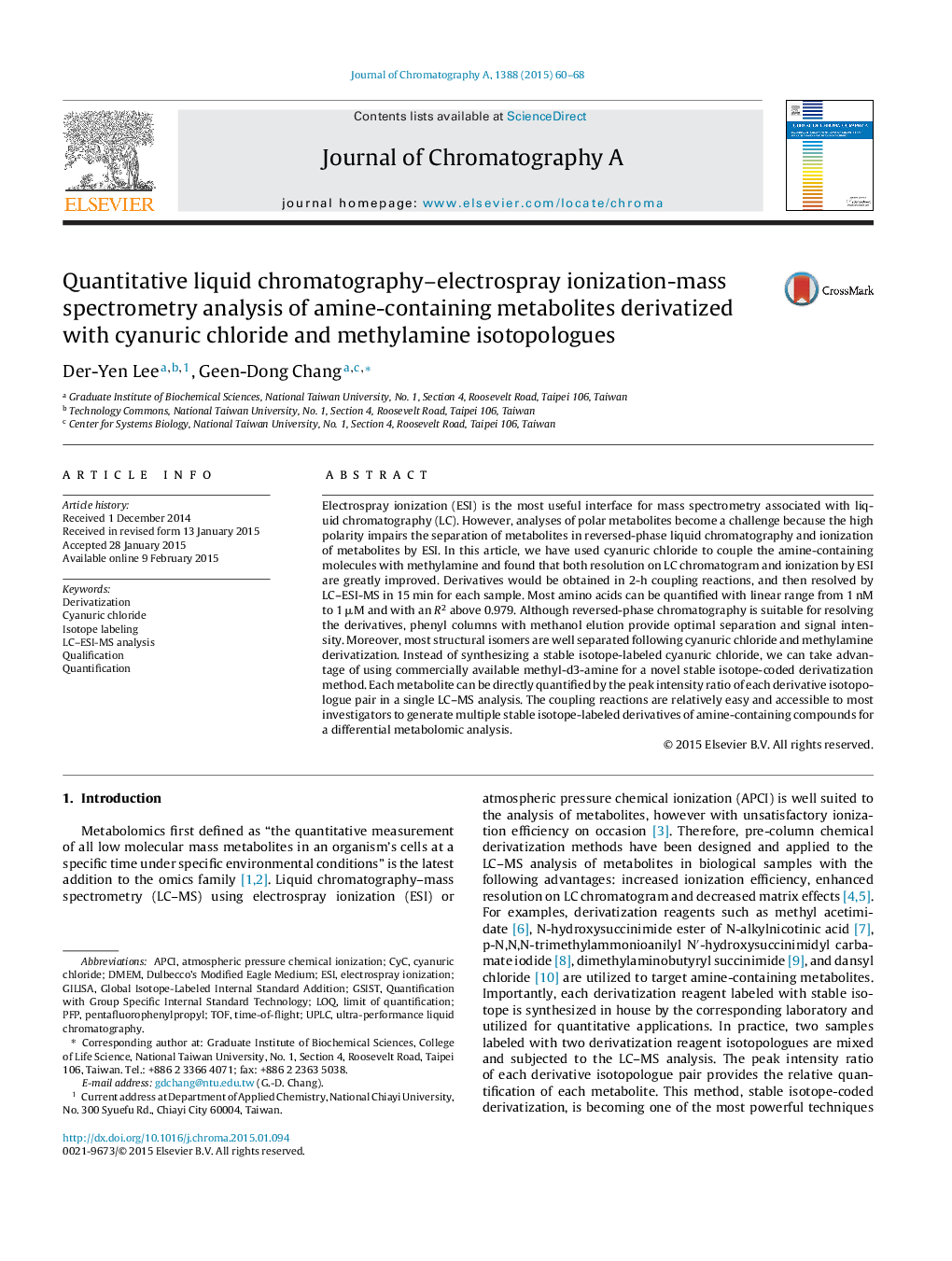| Article ID | Journal | Published Year | Pages | File Type |
|---|---|---|---|---|
| 1201891 | Journal of Chromatography A | 2015 | 9 Pages |
•Cyanuric chloride reacts with amine-containing metabolites and methylamine sequentially.•The derivatization improves the analysis of metabolites by LC–ESI-MS.•The derivatization is suitable for metabolite identification and quantification.•Stable isotope labeling with methyl-d3-amine is convenient and economic.•Isotopic derivatives from this method are ideal for differential metabolic analysis.
Electrospray ionization (ESI) is the most useful interface for mass spectrometry associated with liquid chromatography (LC). However, analyses of polar metabolites become a challenge because the high polarity impairs the separation of metabolites in reversed-phase liquid chromatography and ionization of metabolites by ESI. In this article, we have used cyanuric chloride to couple the amine-containing molecules with methylamine and found that both resolution on LC chromatogram and ionization by ESI are greatly improved. Derivatives would be obtained in 2-h coupling reactions, and then resolved by LC–ESI-MS in 15 min for each sample. Most amino acids can be quantified with linear range from 1 nM to 1 μM and with an R2 above 0.979. Although reversed-phase chromatography is suitable for resolving the derivatives, phenyl columns with methanol elution provide optimal separation and signal intensity. Moreover, most structural isomers are well separated following cyanuric chloride and methylamine derivatization. Instead of synthesizing a stable isotope-labeled cyanuric chloride, we can take advantage of using commercially available methyl-d3-amine for a novel stable isotope-coded derivatization method. Each metabolite can be directly quantified by the peak intensity ratio of each derivative isotopologue pair in a single LC–MS analysis. The coupling reactions are relatively easy and accessible to most investigators to generate multiple stable isotope-labeled derivatives of amine-containing compounds for a differential metabolomic analysis.
